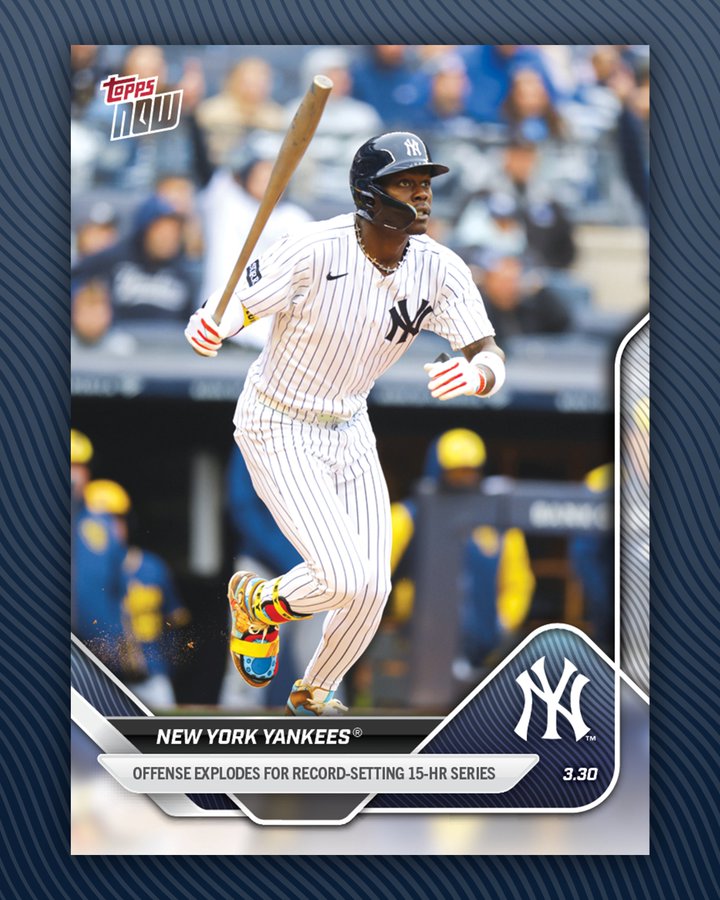Within the storied realms of baseball—a game as intrinsically American as apple pie and endless debates over whether Babe Ruth would fare well against modern pitchers—a new era is upon us. The arrival of the torpedo bat has sparked a boon that extends far beyond the ballpark, into the intricate web of baseball card collecting. Fans and collectors alike are witnessing both statistics and card prices rocket into the stratosphere.
Ah, the “torpedo” bat—a contraption born seemingly out of a mad scientist’s dream and a hitter’s fervent wish for endless power. These bats are not simply woods whittled into traditional forms; they are carefully crafted, personalized precision instruments, designed with every hitter’s particular swing and flair in mind. It’s like a Hattori Hanzō sword for baseball players, cutting through the air with lethal and electrifying efficiency.
No one felt the sting of these powerful creations more prominently than the Milwaukee Brewers. During their recent clash with the New York Yankees, they watched as a torrent of home runs—15 in total and a staggering nine in one game—flew over the fences with awe-inspiring ferocity. The Yankees, wielding their new weapons of choice, captured attention and struck fear into the hearts of pitchers nationwide. Tradition-loving purists might cluck disapprovingly, while the game’s thrill-seeking spectators can only cheer.
As fans relive epic home runs in their living rooms or ballpark seats, card collectors, ever astute to the undercurrents of the sport, now find themselves chasing the scent of opportunity. The prolific rise of torpedo bats has collectors racing to capitalize on the elevated profiles of power hitters. In the fevered marketplace of baseball cards, an investment in sluggers is akin to buying stocks just before a company releases a blockbuster product.
Take Aaron Judge, for instance: a titan among Yankees whose cards have surged in value even faster than his team’s recent home runs. Judge, unconverted to the torpedo so far, finds his mystique further amplified merely by being associated with a team that can now light up the scoreboard with unprecedented frequency. Meanwhile, for collectors, his card’s appreciation echoes the confidence in hitting prowess that the torpedo bat era demands.
However, this seismic shift also presents troubling waters for pitchers and the collectors devoted to them. As hitters achieve new heights, the allure of pitching cards experiences a stark downturn, much like a particularly erratic knuckleball that defies the will of its thrower. Stars like last year’s National League Rookie of the Year, Paul Skenes, might find their card values evaporate faster than a lead in the ninth inning. Youthful prospects like the Tigers’ Jackson Jobe and the Dodgers’ Roki Sasaki could confront a similar fate unless Major League Baseball considers changes to curb the newfound offensive bravado.
Even a dual-threat marvel like Shohei Ohtani might find his allegiances swayed. Ohtani, whose talents on the mound are matched by his ferocious bat, might discover a temptress’ call in these new torpedo bats. The thrill of consistently launching baseballs into fans’ eager hands may prove irresistible, with Dodgers fans and collectors alike harboring fantasies of an Ohtani who embraces the full-time role of a home-run king.
All this change demands pitchers gird themselves. As torpedo-wielding opponents prepare to flex their newfound muscle, strategists within the bullpen arena must diligently update their tactics. Should a pitcher fearfully clutch his glove tighter or opt to work more on precision and finesse to counteract the might of these new-era sluggers?
For card collectors, however, the path forward seems clearer. The best bet is to double down on the heavyweights of the plate—the behemoth hitters set to define this new age of baseball, armed with torpedo bats that offer unrivaled power. The game’s romance may have encountered a technological revolution, but the age-old thrill of a hard-earned victory remains unchanged.
In this brave world, we see tradition and innovation dance their age-old tango, often stepping on each other’s toes. But whether you’re cheering on those lighting up the scoreboard or lamenting the shift away from tactical low-score duels, one fact is clear: the new era has begun, inviting both collector and athlete alike to adapt, thrive, and revel in the game’s enduring allure.


